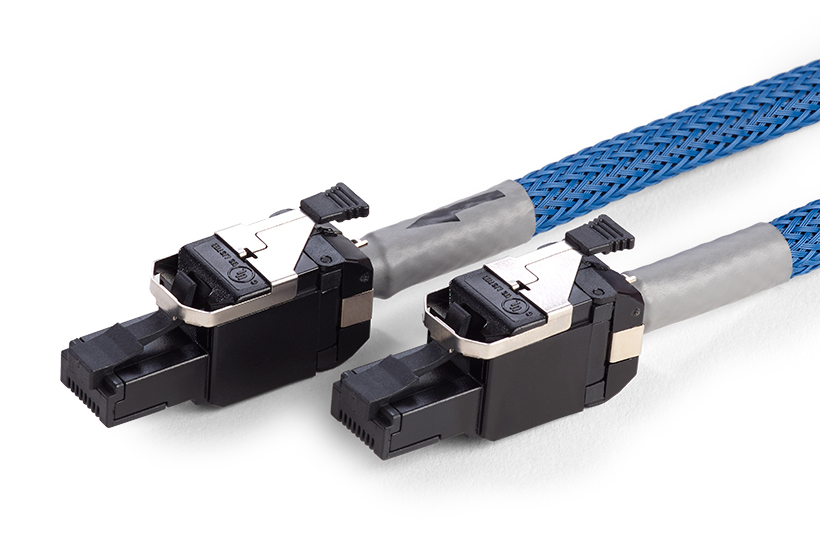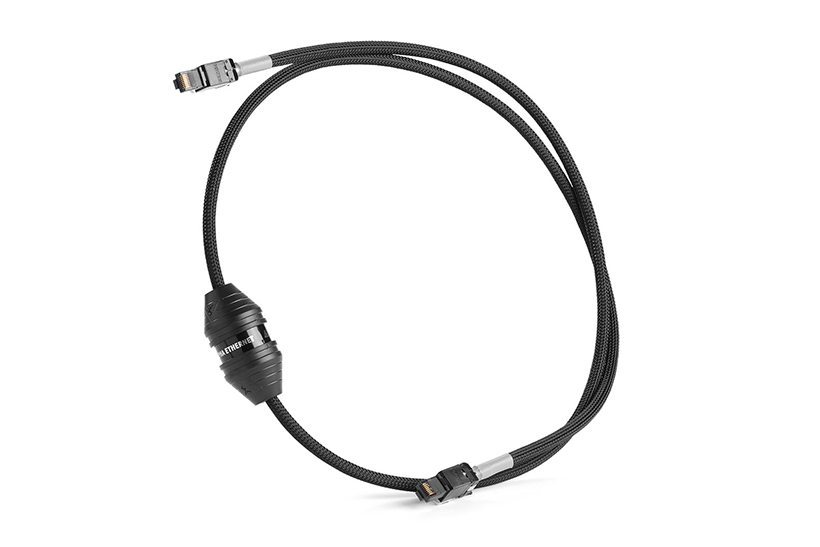Last year I was lucky enough to be sent some Shunyata Venom NR mains cables to review, along with a Venom UK6 power distribution block and as some of you may recall, I thought they were excellent, to the point where they continue to be my primary power cables across all my audio components. Therefore when the good people at Shunyata contacted me and asked if I would like to compare their four levels of ethernet cables, I was more than happy to accept. It was only afterwards that I asked myself how exactly I was going to do that.
In due course I had a box containing four ethernet cables, which are designated Venom, Delta, Alpha and Sigma, in ascending order of performance and cost. (Casting my mind back more than 50 years to my Greek O level lessons, Delta came after Alpha, but I’ll let it pass.) I realise that at this point a proportion of our readership will have lost interest because ‘cables don’t make a difference especially in the digital domain – it’s only ones and zeroes for goodness sake’, which is perfectly fair as a point of view albeit easily disproven by demonstration. For those of you still with me, read on and I shall share my experience.

Belden modular connector

Telegärtner modular connector
Before I do, I need to give you the basics of my system layout, to try and put my findings in context. My BT Homehub 6 router sits in the listening room, connected to the wall socket via a non-audiophile cable. To the router are connected three D-Link Gigabit switches. Two are for audio purposes and one supports the TV, Blu-Ray player and the Sky Q box. One of the audio switches supports a Naim Unitiserve and two Western Digital NAS drives, and the other supports my Lyngdorf TDAI 3400 amplifier/DAC/streamer. The cable between the switches and the router are by UGreen and were purchased from the Bezos empire. I use the the Lyngdorf with UPnP to play music stored on the Unitiserve, and I stream Qobuz and internet radio too. I have not so far invested in a better wireless router or expensive runs of cables, but following my experience with these Shunyata cables I may revise that strategy.
Let me briefly describe the four different cables. They all share PTFE dielectric (insulation) and PMZ conductors and have all been subjected to Shunyata’s trade-marked Kinetic Phase Inversion Process, the claimed benefits of which include the elimination of the need to ‘run in’ the cables and the significant reduction signal degradation and micro-distortions. According to Caelin Gabriel, the chief designer at Shunyata, digital cables are more vulnerable to these issues than slower speed analogue cables. PMZ is another technology introduced by Mr Gabriel, it is intended to guarantee that every Shunyata ethernet cable has precision matched impedance, using a specially developed extrusion and shielding processes.

Shunyata Venom
Venom is the least expensive the four cables, but still enjoys the quality feel and finish that I have come to expect of Shunyata. It is terminated with Belden modular connectors. Delta is slightly more expensive than and replaces the Belden connectors with more substantial feeling Telegartner ones. Alpha and Sigma have slightly heavier copper (22 vs 24 gauge in the less expensive variants) but with the addition of Common Mode Filter technology. Alpha has a single Common Mode module while top of the range Sigma has a pair of them. The claim for the Common Mode filters is that they reduce high-frequency noise distortion, and, in the words of the Shunyata brochure, ‘deliver an analog ease and palpable background silence that will close the gap between digital and analog performance.
Streaming versus using physical media, in the form of records, CDs and SACDs usually accounts for perhaps 30% of my listening time but during the course of this review I tried to do the majority of my listening using cloud based services. I tried each of the cables in turn to listen to Qobuz, using their high resolution files whenever these were available. I started with the Venom cable.

Shunyata Delta
Sound quality
Compared with ‘ordinary’ cable which it replaced, the Venom made an immediate and positive impression. Flitting between various new releases on Qobuz, I felt more drawn into the music than I had, and started to hear small details in the mix of recordings that had passed me by before. I felt that this was already a worthwhile step forward for my listening experience. Switching to the Delta cable, with its more substantial Telegartner connectors, I have to say that I struggled to hear very much difference from the very good sound I had enjoyed from the Venom. However those better connectors seemed to make a much more emphatic connection with both the switch and the amplifier, and that alone may be worth the added investment to some purchasers. I changed the Venom and Delta cables several times during this phase of my listening and in the end decided that I could not hear any meaningful difference.
Putting the Alpha cable in to replace the Delta was altogether different. The benefits of the single Common Mode Filter were immediately and obviously audible. The noise floor seemed lower, bass was better defined, and subjectively seemed more tuneful, voices seemed to project more into the room and the soundstage (which is already a major strength of the Lyngdorf TDAI 3400) got even wider, taller and deeper. I was genuinely taken aback. I listened for a whole day, to rock, jazz, electronica and classical music files from Qobuz. The increased musicality was evident no matter what I played. To make sure I was not simply auto-suggesting, I switched the Venom cable back in. It was fine, but somehow the music seemed smaller and less emotionally engaging.

Shunyata Alpha, new metal connectors not shown
The following day, I put in the Sigma cable, with its two Common Mode Filters. Playing the same selection of music from Qobuz, I was immediately struck by the improvement in the overall sound. Every area of the frequency spectrum seemed clearer, with different threads within the music being easier to follow. How ‘analogue’ it sounded is hard to explain, but I think the twin filters were definitely eliminating any digital ‘noise’ and RFI and therefore the sound was just purer, closer to that which the artists and producers intended. My conclusion was that one filter is good but two are even better.
After extensively listening to Qobuz I brought my Naim Unitiserve into the action and tried pretty much every combination of cable into that and into the Lyngdorf. Once again, I could definitely hear improvements with the C Module equipped cables, Alpha and Sigma. After several days of changing things around I ended up preferring the Sigma at the streamer end (Lyngdorf) and the Alpha at the source end (Unitiserve). I also tried the four Shunyata cables on the Unitiserve alone, with my standard cable into the Lyngdorf. Even in this configuration the sound improvements were progressive as I moved up the hierarchy, with the sound from Sigma cable in the Unitiserve being the best I have heard from that unit even with my usual cable connecting it to the Lyngdorf.

Shunyata Sigma
If you have stayed with me this far I am grateful to you for your attention. What have I learnt from this extended session with the Shunyata ethernet cable family? First, that the ‘entry’ level Venom is a huge improvement over standard ethernet cables. Secondly that one can hear the differences between the Common Mode filtered cables and the unfiltered ones. Unless you have a super high end system you may well find that one of the latter is more than good enough for your purposes. At about three times the price, the Sigma is astonishingly good – if you have a system sufficiently revealing to let you hear what the Sigma is doing then just go for it. It would be fascinating to see how much better an upmarket router could make things (a better power supply on standard router helps – Ed). Ones and zeroes they may be, but digital audio can definitely be enhanced by improved cabling. We may need to agree to differ on this, but I can only share with you what I heard. But in the meantime I am going to start saving up for a Sigma. Having heard it I know nothing else will satisfy me in quite the same way, or be more likely to see me ignoring my turntable more often and seeking out streamed music.


